35 Invaluable Hindu and Buddhist Statues Destroyed in Maldives by Extremist Islamic Group
35 Invaluable Hindu and Buddhist Statues Destroyed in Maldives by Extremist Islamic Group |
- 35 Invaluable Hindu and Buddhist Statues Destroyed in Maldives by Extremist Islamic Group
- 2012 Indian Film Festival in Korea
- Tanis Wetaskiwin / Grey Buffalo
- Korean doctor uses meditation as therapy
- Buddhists in Buryatia, Baikal region celebrate year of Black Dragon
- Buddhist monk, Dalit leaders get bail
- Varnsdorf, a north Bohemian town in the path of Buddha
- Tibetans asked to shun Tibetan New Year celebrations
- Myanmar: Buddhist festival celebrates a new freedom
| 35 Invaluable Hindu and Buddhist Statues Destroyed in Maldives by Extremist Islamic Group Posted: 26 Feb 2012 09:00 AM PST ChakraNews.com, Feb 23, 2012Male, Maldives -- Similar to the Afghan Islamic Taliban's destruction of the priceless Buddhist and other historic artifacts in 2001, an Islamic Extremist group has vandalized and destroyed precious Buddhist and Hindu statues in the Maldives which can never be made the same again to preserve the history.
The scene took place at the Maldives' National Museum where the destruction occurred. A group of five men who were a part of an Islamic Extremist group targeted artifacts dating from the Pre-Islamic era in Maldives. Of those destroyed, many Buddhist and Hindu relics were smashed and broken to pieces making them merely unrecognizable. Pieces destroyed, specifically included the "Bohomala sculptures, Hanuman statues, and the a sculpture of the Hindu water god, Makara. The two five faced statues from Male were also brutally damaged. This five-faced male was the only remaining archaeological evidence of a Buddhist era in Maldives and it too was destroyed, completely destroying any true history of the country. In addition an 11th century coral stone of the Lord Buddha was also wiped out. The museum staff were emotionally distraught and upset that any evidence of a Buddhist existence in Maldives was completely destroyed and torn down heartlessly. They stated that all their 12th century statues were lost which were made of coral and limestone. There is no way to restore them because they were very brittle and this makes it very difficult to remake, one of the staff members said. The Adhaalath Party, a Maldives Islamic group, who supports the newly elected President Mohamed Waheed, stated that the constitution does not allow idols anywhere in Maldives. Maldives also does not permit non-muslims to become permanent citizens of the small island nation. Read More @ Source |
| 2012 Indian Film Festival in Korea Posted: 26 Feb 2012 08:00 AM PST by Emi Hayakawa, BTN, Feb 26, 2012Seoul, South Korea -- The Hannarae Culture Foundation opened the "2012 Indian Film Festival" to promote Korean traditional culture to foreigners in Korea.
This film festival will continue in Seoul at the Seoul CGV movie collage center from March 1st till March 6th. The Hannarae Culture Foundation showcased the Indian film, "I am Kalam" on the opening event on February 16th to express the Korean-Indian friendship. The director of Hannarae Culture Foundation, the head priest of Heongbeobsa temple, Venerable ShimSan, stated, "I hope that through this film festival, the Korean-Indian cultural exchange will continue to grow." More info please visit: http://www.dureraum.org/bcc/main/main.do?rbsIdx=1 Read More @ Source |
| Tanis Wetaskiwin / Grey Buffalo Posted: 26 Feb 2012 07:00 AM PST If you are a fan of Tibetan music, look no further than the incredible Tanis Wetaskiwin from Edmonton for the latest and greatest in Tibetan music vids… She's on Facebook, representing for Native Canadian culture, Tibetan culture, and justice everywhere! http://www.facebook.com/people/Tanis-Wetaskiwin/100000737791353 She's also on YouTube, with her own Grey Buffalo channel of Tibetan music videos: http://www.youtube.com/user/greybuffalo Read More @ Source |
| Korean doctor uses meditation as therapy Posted: 26 Feb 2012 06:00 AM PST by Emi Hailey Hayakawa, BTN, Feb 26, 2012Seoul, South Korea -- There has been recent development in the studies of meditation and psychotherapy.
Dr. Jung uses the three steps; preparation, concentration, and mindfulness meditation, to make the patients be aware of their bodies. Dr. Jung re-developed Korean seon and mandala meditation, yoga and started this new program from November 2010. After eight runs of this meditation program, the results proved to be positive. In Dr. Jung's research, the symptoms of depression in the control group was much higher than the group that received Dr. Jung's Korean meditation treatment. His re-search showed that Buddhist meditation was largely helpful in improving individual's lifestyle. Dr. Jung plans to continue his research on Buddhist meditation and to create a medita-tion program manual for patients to be able to carry on these meditation programs in their daily lives. Buddhist meditation is beginning to play an important role in modern Western medicine. Mindfulness and compassion causes one to be self conscious of their reality. Korean researchers in recent years are putting in more effort to create Buddhist meditation program researches to improve the lifestyles of patients with various psychological illnesses. Read More @ Source |
| Buddhists in Buryatia, Baikal region celebrate year of Black Dragon Posted: 26 Feb 2012 05:00 AM PST Interfax, 24 February 2012Chita, Buryatia (Russia) -- Buddhists in Buryatia and the Baikal Territory waved goodbye to the Year of the White Hare and welcomed the Year of the Black Dragon. A day earlier head of the Buddhist Traditional Sangha of Russia Pandito Khambo Lama Damba Ayusheyev congratulated Buddhists on the holiday.
The word 'sagaalha' [Sagaalgan] derives from 'saga alhaha,' which means to step over the time, to get over it, because time is directly linked to Erleg Khan, the Lord of Death, the Supreme Lama of Russia also recalled. "During the celebration of the Sagaalha it is more important to prepare for the future passage through the Year of Black Dragon," he said. In the early hours of Wednesday, lamas at datsans (Buddhist monasteries) read mantras to the Goddess Baldan Lhamo. Buddhists believe that on the first night of Sagaalgan (the lunar new year) one should rise early because at 5 a.m. Baldan Lhama visits her dominions and gives particular blessing to those who are awake. A day before the celebration, Buddhist lamas held a holy ritual, Dugzhuba, suppressing 64 evil forces. Under the sound of timpani and drums, they lit ritual fires and prayed that all the woes that befell people in the past year would be destroyed by the fire. Read More @ Source |
| Buddhist monk, Dalit leaders get bail Posted: 26 Feb 2012 04:00 AM PST T. V. Sivanandan, The Hindu, Feb 19, 2012
They were charged with removing idol found at ASI site Gulbarga, India -- Fourth Additional District and Sessions judge Basavaraj Belawagi has granted conditional bail to Buddhist monk Banteji Bhodidhamma and four Dalit leaders who were charged with removing an idol of a Hindu goddess from an excavation site in Chithapur taluk of Gulbarga district under the control of the Archaeological Survey of India (ASI).
Allowing the bail application of the monk and Dalit leaders Nagendra Jawali, Santosh Melmani, Kishore Gaekwad and Hanumanth Itagi, the judge ordered their release on a personal bond of Rs. 25,000 each. The judge rejected the contention of the prosecution that the accused would jump bail and influence witnesses in the case. The monk, who was initially lodged in the high security Gulbarga Central Prison, was later shifted to a private hospital by the jail authorities after he complained of uneasiness. The four Dalit leaders were lodged in the Gulbarga Central Prison.
The claim of the monk and the Dalit leaders was that the idol had been placed in a Buddhist site located at Sannati with the ulterior motive of proving that the site also contained remnants of Hindu gods and goddesses. Incidentally, the ASI and independent historians identified the site, which dates back to between the 1st and 3rd centuries A.D., as one of the oldest Buddhist sites in Karnataka. The Sannati site also has a special place due to the fact that four major rock edicts of the Mauryan period are found there. It is said to be similar to other known eminent Buddhist sites at Ter in Maharashtra and Nagarjuna Konda in Andhra Pradesh. The stupas found in Sannati are considered much larger and artistically richer than the famed Stupa at Sanchi. Dalit organisations and the monk gave a representation to Regional Commissioner K. Ratnaprabha to remove the idol and set up an enquiry on how it was placed in an excavation site under the control of the ASI. Read More @ Source |
| Varnsdorf, a north Bohemian town in the path of Buddha Posted: 26 Feb 2012 03:00 AM PST by Jan Richter, Radio Prague, Feb 25, 2012Prague, Czecg Republic -- A town surrounded by deep pine forests, dotted with old timbered German-style villas and occasional Communist-era prefab houses, a town boasting many parks, a river, two churches – and the country's first Buddhist temple. This is Varnsdorf, a town of 16,000 in the northernmost part of the Czech Republic.
Only a few hundred metres from a border crossing to Germany, a 1912 two-storey villa that once belonged to a local entrepreneur, is the religious centre of the Czech Republic's large Vietnamese community. Since January 2008, it has been the home of the Thien An Temple, the first Buddhist shrine in central and eastern Europe. I asked Vu Ling Ngoc, from the local Vietnamese community, what made them establish a Buddhist shrine in their town. "We have been here for nearly 20 years, and we have a large community here. In Vietnam, Buddhism is a religion as well as a part of our culture. So we want our future generations, which will stay here in the Czech Republic, to know about our own traditions, our customs. That's why our community here in Northern Bohemia, and the whole country, put money together to establish this temple."
"The service takes place twice a month, on the 1st and 15th of the lunar month. People come here from Prague, Brno, Ostrava, from Poland and Germany. So far, we've had a quite a lot of people coming here." Today, the Vietnamese community in the Czech Republic officially numbers 45,000. Young Vietnamese started coming to Czechoslovakia in the 1970s and 1980s to study and to learn trades. After the fall of communism, many of them stayed in the country and took to retail business, especially in the areas bordering on Austria and Germany, and Varnsdorf is one of the community's largest centres in Northern Bohemia. But it seems that on rocky ground with little soil, the universal Buddhist message of love and peace will have to struggle. I went to the local catholic gymnázium, or grammar school, and asked students how they felt about living together with the Vietnamese community. "In our school, we have some Vietnamese, but I don't like them. I think they are horrible because they own lost of pubs and small shops, food and clothes shops in our town. I think it's horrible because they are everywhere." "I think that they should stay at home. They come here because they think that they will have an easier life here but this is not true. The good thing about is that our people are also poor but and they buy cheap clothes from them. This is maybe why they are here. But I don't like them even so because all those guys bring lost of illnesses in here." "Today's world is quite cosmopolitan and it's not a problem. For example, next year I want to study in Germany, and I can because the Czech Republic is in the EU. The key is to meet the right people, try to be tolerant and change your mind." Varnsdorf, once the biggest village in the Austrian Empire before it acquired a town status in 1868, was almost entirely German until after the Second World War. In 1946 and '47, ethnic Germans were expelled from Czechoslovakia and the area known as Sudetenland was resettled with Czechs and Slovaks. Soon enough, the town also became a home for a large Roma community who moved here as cheap labourers from Slovakia. But Varnsdorf has a history of religious strife – in late 19th century, the town became a centre of the Old Catholic Church in the Austro-Hungarian Empire. Josef Zbihlej is a historian at the local museum. "The Old Catholic Church in Varnsdorf was founded in 1871. At that time, the local Catholic priests revolted against the Catholic Church and its dogma on Papal infallibility. They were excommunicated but they were lucky to secure the support of local factory owners and managed to raise enough funds to build their own church. The Old Catholic Church used to be quite popular in the area but after the expulsion their numbers dropped to almost zero." The Old Catholic Church of the Transfiguration of Our Lord in Varnsdorf was the biggest of its kind in Austria-Hungary, and it is still active today. Roland Solloch is the Old Catholic priest in Varnsdorf. "The north of Bohemia is difficult turf for a priest, and in fact for any church. I have been the priest here for five years and I have managed to baptize some people. But I see that the way to the church and to Jesus is hard and difficult here." And how does Roland Solloch feel about a Buddhist temple functioning in the town? "For me personally as well as for the church it's something I can put up with, I don't mind at all. Our church is open, not only towards other Christians but to other religions. I'm happy there is a place where people can contemplate and search for the spiritual. I wouldn't even mind if their spiritual leader came to me and we would pray together." Vu Ling Ngoc, one of the founders of the Thien An Temple in Varnsdorf, says local people are interested in what's going on in their shrine, and they haven't had any problems so far. "It's been six months and we've only had good experiences. People come here out of curiosity and we show them around so that they understand what we do. We've had school classes here, even groups of adults who come because they want to see what we do, why we do it and what Buddhism is." The fall of communism has brought many things to Varnsdorf that locals might not be ready for and it might take some time to understand. But Buddhists can be patient in their prayers for awakening from the sleep of ignorance. So if you are in the area and feel like an international moment of Zen, Varnsdorf is the place to go. Read More @ Source |
| Tibetans asked to shun Tibetan New Year celebrations Posted: 26 Feb 2012 02:00 AM PST The Associated Press, Feb 25, 2012Charamsala, India -- Tibet's exiled government in India called on Tibetans this year to shun celebrations for their traditional new year, which started Wednesday.
Instead, Tibetans are urged to pray for those living under Chinese rule. Tibetan spiritual leader the Dalai Lama (not pictured) led a prayer session at the Tsuglakhang Temple in Dharmsala. The Dalai Lamas, who have been spiritual leaders of the Tibetan people since the 17th century, come from the Gelug school of Tibetan Buddhism (also known as the "way of virtue") and are considered by adherents to be the embodiment of the bodhisattva of compassion. The Gelug school places special emphasis on the role of ethics and monastic discipline as the basis for spiritual practice. For that reason, the great majority of Gelug Lamas are monks. The government has been in exile since 1959 following the Tibetan uprising that came in response to repression by the Communist Party of China. Read More @ Source |
| Myanmar: Buddhist festival celebrates a new freedom Posted: 26 Feb 2012 01:00 AM PST by Jocelyn Gecker, Associated Press, February 24, 2012YANGON, Myanmar -- Amid the towering golden spires of Myanmar's grandest Buddhist shrine there was talk of politics and hope for the future as thousands came last week for the return of an annual festival that was banned for more than 20 years by the former military regime.
Gongs chimed at Shwedagon Pagoda as the diamond-studded monument marked what is being billed as the 2,600-year anniversary of the temple, which according to legend houses eight strands of Buddha's hair. More than a tribute to Buddhism, the event was a celebration of new freedom and the latest sign of change in this long-repressed country.
"They cannot control us by pointing guns at us anymore," the monk said. For nearly half a century, the country was ruled by a secretive, xenophobic military regime that cracked down on any perceived dissent. The junta ceded power last year to an elected but military-backed government that has surprised critics with an unexpected wave of reforms — freeing political prisoners, relaxing strict media censorship and allowing opposition leader Aung San Suu Kyi to run for parliament in April. Fear that was so pervasive among the people of Myanmar is gradually giving way to greater confidence. Many people spoke candidly about the new government, without lowering their voices. Under the junta, it was taboo to discuss politics with foreigners and gatherings of more than five people were subject to a ban, due to the generals' fears of an uprising. Smaller pagoda ceremonies that focused on religious rituals were allowed by the defunct military regime. But larger festivals, particularly at the Shwedagon, were seen as holding potential for trouble in this devoutly Buddhist country, where religion and politics have often mixed. The Shwedagon was used as a rallying point for anti-government protesters in 2007 when monks led a pro-democracy uprising that the army quashed with deadly force. It was against the backdrop of the Shwedagon's golden dome that Suu Kyi electrified a crowd of half a million people in 1988 with a speech that launched her career as opposition leader and Myanmar's icon of democracy. After that, the ruling junta halted the annual pagoda festival at Shwedagon for what they called "security reasons," said Khin Maung Aye, a Buddhist scholar and an organizer of the event. "My son is 22. He was born in 1989, and he has never witnessed the real Shwedagon Pagoda festival," he said. "I have dreamed of this for many years, but I dared not think it would be so big." Perched on a hilltop, the Shwedagon Pagoda dominates the Yangon skyline, and is especially prominent at night, when floodlights make the golden temple glow brightly. In a country of great poverty it is a lavish shrine; the main spire is said to contain 4,351 diamonds, including a single 76-carat diamond at the top. For the festival, Shwedagon's well-maintained grounds were spruced up with a half million orchids, dahlias and other flowers, organizers said. The event opened with a morning procession of thousands of people in ceremonial costume walking barefoot along the temple's marble halls. Gongs clanged from all corners of the compound as hundreds of monks chanted and the government's Religious Affairs Minister, Myint Maung, came to pray. A group of 12 monks are to take turns chanting nonstop until the full moon on March 7, when the celebrations will end. Entertainment outside the compound will include traditional puppet shows and dancers, and a fairground with vendors selling handicrafts and food from around the country. One frail older woman said she had read in newspapers that the festival was making a comeback, but she didn't believe it. So she traveled two hours by bus from her hometown of Oakkan, north of Yangon, to see it firsthand. "It's a shame and a sad thing that the government in a Buddhist country took this significant festival away from us for so long," said Myint Kyi, whose husband held her upright for support. "This makes me not only happy but excited," she said softly. "Now I realize there is some change in Myanmar. There must be if this is allowed." ----------- Dalai Lama and Vegetarianism This posting includes an audio/video/photo media file: Download Now |
| You are subscribed to email updates from BuddhaRocks ☸ Buddhist To stop receiving these emails, you may unsubscribe now. | Email delivery powered by Google |
| Google Inc., 20 West Kinzie, Chicago IL USA 60610 | |

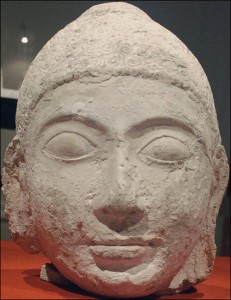 << The head of Lord Buddha statue that was on the display. Courtesy National Museum, Maldives
<< The head of Lord Buddha statue that was on the display. Courtesy National Museum, Maldives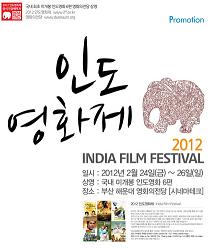 The Indian Film Festival will be opened in Busan Cinema Center from February 24th to the 26th and will showcase six Indian films that have not yet opened in Korea free of charge.
The Indian Film Festival will be opened in Busan Cinema Center from February 24th to the 26th and will showcase six Indian films that have not yet opened in Korea free of charge. Dr. Jung Soon Young of Koyang Physiatrics Hospital received his phD degree at the Seoul Buddhist Graduate Program through his research paper on Korean Buddhist meditation program for Schizophrenia.
Dr. Jung Soon Young of Koyang Physiatrics Hospital received his phD degree at the Seoul Buddhist Graduate Program through his research paper on Korean Buddhist meditation program for Schizophrenia. 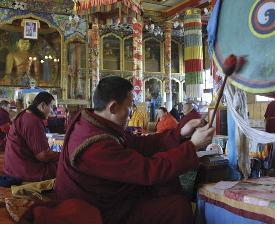 "The new year of the Black Dragon will not be easy for all of us because of the events occurring worldwide. I am therefore wishing you to have patience, optimism, wisdom and health. Remember what the great Buddha said: a human life has the greatest value. Take care of one another," he said in his congratulatory letter.
"The new year of the Black Dragon will not be easy for all of us because of the events occurring worldwide. I am therefore wishing you to have patience, optimism, wisdom and health. Remember what the great Buddha said: a human life has the greatest value. Take care of one another," he said in his congratulatory letter.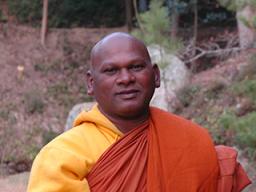 << Bhante Bodhidharma was granted conditional bail with four Dalit leaders
<< Bhante Bodhidharma was granted conditional bail with four Dalit leaders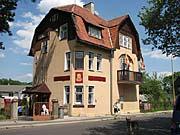 << The Thien An Temple in Varnsdorf, photo: Jan Richter
<< The Thien An Temple in Varnsdorf, photo: Jan Richter 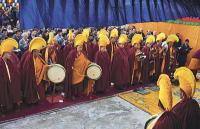 << In this photo, exiled Tibetan Buddhist monks beat ceremonial drums and cymbals on Wednesday, the first day of the Tibetan New Year, in Dharmsala, India.
<< In this photo, exiled Tibetan Buddhist monks beat ceremonial drums and cymbals on Wednesday, the first day of the Tibetan New Year, in Dharmsala, India.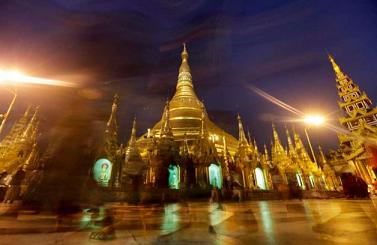 << Myanmar's Buddhist devotees throng the Shwedagon Pagoda during its 2600th anniversary celebrations in Yangon, Myanmar, Wednesday, Feb. 22, 2012. Photo: AP / SA
<< Myanmar's Buddhist devotees throng the Shwedagon Pagoda during its 2600th anniversary celebrations in Yangon, Myanmar, Wednesday, Feb. 22, 2012. Photo: AP / SA